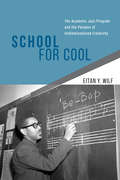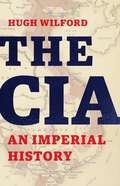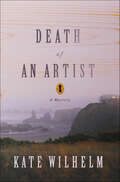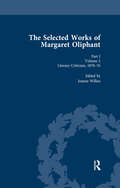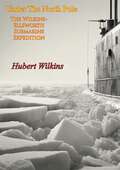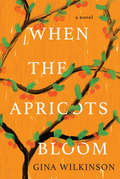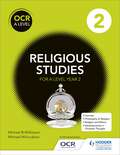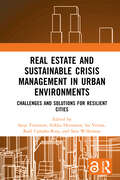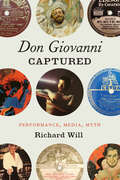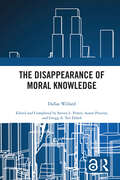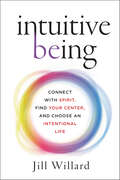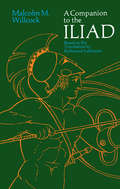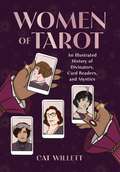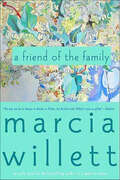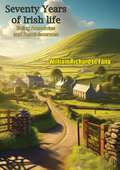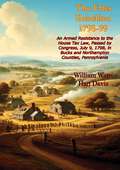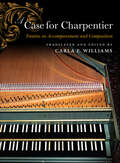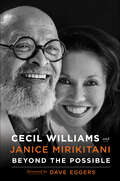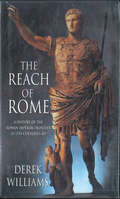- Table View
- List View
School for Cool: The Academic Jazz Program and the Paradox of Institutionalized Creativity
by Eitan Y. WilfJazz was born on the streets, grew up in the clubs, and will die—so some fear—at the university. Facing dwindling commercial demand and the gradual disappearance of venues, many aspiring jazz musicians today learn their craft, and find their careers, in one of the many academic programs that now offer jazz degrees. School for Cool is their story. Going inside the halls of two of the most prestigious jazz schools around—at Berklee College of Music in Boston and the New School for Jazz and Contemporary Music in New York—Eitan Y. Wilf tackles a formidable question at the heart of jazz today: can creativity survive institutionalization? Few art forms epitomize the anti-institutional image more than jazz, but it’s precisely at the academy where jazz is now flourishing. This shift has introduced numerous challenges and contradictions to the music’s practitioners. Solos are transcribed, technique is standardized, and the whole endeavor is plastered with the label “high art”—a far cry from its freewheeling days. Wilf shows how students, educators, and administrators have attempted to meet these challenges with an inventive spirit and a robust drive to preserve—and foster—what they consider to be jazz’s central attributes: its charisma and unexpectedness. He also highlights the unintended consequences of their efforts to do so. Ultimately, he argues, the gap between creative practice and institutionalized schooling, although real, is often the product of our efforts to close it.
The CIA: An Imperial History
by Hugh WilfordIn this &“superb&” (Kathryn Olmsted) new history of American intelligence, a celebrated historian uncovers how the CIA became the foremost defender of America&’s covert global empire As World War II ended, the United States stood as the dominant power on the world stage. In 1947, to support its new global status, it created the CIA to analyze foreign intelligence. But within a few years, the Agency was engaged in other operations: bolstering pro-American governments, overthrowing nationalist leaders, and surveilling anti-imperial dissenters at home. The Cold War was an obvious reason for this transformation—but not the only one. In The CIA, celebrated intelligence historian Hugh Wilford draws on decades of research to show the Agency as part of a larger picture, the history of Western empire. While young CIA officers imagined themselves as British imperial agents like T. E. Lawrence, successive US presidents used the covert powers of the Agency to hide overseas interventions from postcolonial foreigners and anti-imperial Americans alike. Even the CIA&’s post-9/11 global hunt for terrorists was haunted by the ghosts of empires past. Comprehensive, original, and gripping, The CIA is the story of the birth of a new imperial order in the shadows. It offers the most complete account yet of how America adopted unaccountable power and secrecy abroad and at home.
The CIA: An Imperial History (Studies In Intelligence Ser.)
by Hugh Wilford'A spectacular achievement' Dominic Sandbrook'Fast-paced, absorbing, insightful' Simon Hall'Simply superb' Kathryn OlmstedA celebrated British historian of US intelligence explores how the CIA was born in anti-imperialist idealism but swiftly became an instrument of a new covert empire both in America and overseas.As World War II ended, the United States stood as the dominant power on the world stage. In 1947, to support its new global status, it created the CIA to analyse foreign intelligence. But within a few years, the Agency was engaged in other operations: bolstering pro-American governments, overthrowing nationalist leaders, and surveilling anti-imperial dissenters in the US.The Cold War was an obvious reason for this transformation - but not the only one. In The CIA, celebrated intelligence historian Hugh Wilford draws on decades of research to show the Agency as part of a larger picture, the history of Western empire. While young CIA officers imagined themselves as British imperial agents like T. E. Lawrence, successive US presidents used the covert powers of the Agency to hide overseas interventions from postcolonial foreigners and anti-imperial Americans alike. Even the CIA's post-9/11 global hunt for terrorists was haunted by the ghosts of empires past.Comprehensive, original, and gripping, The CIA is the story of the birth of a new imperial order in the shadows. It offers the most complete account yet of how America adopted unaccountable power and secrecy both at home and abroad.
Death of an Artist: A Mystery
by Kate WilhelmIn Kate Wilhelm's latest crime novel, a small Oregon town is rocked by a wheels-within-wheels case of art, fraud, and murder.Silver Bay, Oregon, a small coastal resort town with nearly a thousand residents, is home to three generations of women: Marnie, the long-widowed owner of a small gift shop; Van, her granddaughter, who is about to graduate medical school; and Stef, mercurial, difficult, and a brilliant artist who refuses to sell her work.When Stef discovers that Dale Oliver—the latest husband/paramour in a very long line—is trying to sell her work behind her back, she puts a stop to it and threatens to do the same to him. Shortly thereafter, Stef dies in an accident in her studio, and Dale shows up with a signed contract granting him the right to sell her work.Convinced that Stef was murdered in order to steal her artwork, Marie and Van—grandmother and granddaughter—decide to do whatever is necessary to see that Dale doesn't get away with any of it. This includes enlisting the help of the new stranger in town, Tony, a former New York City cop, who might be the only one who can prove it was murder and bring the killer to justice.
The Selected Works of Margaret Oliphant, Part I Volume 2: Literary Criticism 1870-76
by Joanne WilkesMargaret Oliphant (1828-97) had a prolific literary career that spanned almost fifty years. She wrote some 98 novels, fifty or more short stories, twenty-five works of non-fiction, including biographies and historic guides to European cities, and more than three hundred periodical articles. This is the most ambitious critical edition of her work.
When Evil Lived in Laurel: The White Knights And The Murder Of Vernon Dahmer
by Curtis WilkieOne of NPR's Best Books of the Year Finalist for the 2022 Edgar Award for Best Fact Crime The inside story of how a courageous FBI informant helped to bring down the KKK organization responsible for a brutal civil rights–era killing. By early 1966, the work of Vernon Dahmer was well known in south Mississippi. A light-skinned Black man, he was a farmer, grocery store owner, and two-time president of the Forrest County chapter of the NAACP. He and Medgar Evers founded a youth NAACP chapter in Hattiesburg, and for years after Evers’s assassination Dahmer was the chief advocate for voting rights in a county where Black registration was shamelessly suppressed. This put Dahmer in the crosshairs of the White Knights, with headquarters in nearby Laurel. Already known as one of the most violent sects of the KKK in the South, the group carried out his murder in a raid that burned down his home and store. A year before, Tom Landrum, a young, unassuming member of a family with deep Mississippi roots, joined the Klan to become an FBI informant. He penetrated the White Knights’ secret circles, recording almost daily journal entries. He risked his life, and the safety of his young family, to chronicle extensively the clandestine activities of the Klan. Veteran journalist Curtis Wilkie draws on his exclusive access to Landrum’s journals to re-create these events—the conversations, the incendiary nighttime meetings, the plans leading up to Dahmer’s murder and its erratic execution—culminating in the conviction and imprisonment of many of those responsible for Dahmer’s death. In riveting detail, When Evil Lived in Laurel plumbs the nature and harrowing consequences of institutional racism, and brings fresh light to this chapter in the history of civil rights in the South—one with urgent implications for today.
Under The North Pole: The Wilkins-Ellsworth Submarine Expedition
by Hubert WilkinsIn "Under the North Pole: The Wilkins-Ellsworth Submarine Expedition," Sir Hubert Wilkins narrates the thrilling account of an unprecedented journey beneath the icy Arctic waters. Published in 1931, this book chronicles the daring and ambitious submarine expedition led by Wilkins and sponsored by millionaire Lincoln Ellsworth, aimed at exploring the uncharted territories beneath the North Pole.Sir Hubert Wilkins, an esteemed Australian explorer and aviator, brings to life the challenges and triumphs of this extraordinary expedition. The book begins with the planning and preparation stages, detailing the modifications made to the decommissioned U.S. Navy submarine Nautilus to make it capable of withstanding the harsh Arctic conditions. Wilkins provides an insider’s look at the technical innovations and logistical hurdles that had to be overcome.As the Nautilus embarks on its perilous journey, readers are taken on a gripping adventure filled with suspense and discovery. Wilkins describes the crew's experiences as they navigate through treacherous ice floes, battle mechanical failures, and confront the isolation of the deep sea. Wilkins' account not only highlights the physical and mental endurance required but also underscores the importance of teamwork and ingenuity in overcoming adversity."Under the North Pole" is more than just a tale of adventure; it is a testament to human curiosity and the quest for understanding the unknown. Sir Hubert Wilkins' meticulous documentation and engaging storytelling make this book a captivating read for anyone interested in the history of exploration and the pioneering spirit of the early 20th century. Through his eyes, readers gain a deeper appreciation for the bravery and determination that drove explorers to venture into the most inhospitable regions of the Earth.
AQA GCSE History: Health and the People
by Alf WilkinsonExam Board: AQALevel: GCSESubject: HistoryFirst Teaching: September 2016First Exam: June 2018AQA approvedCreate a stimulating, well-paced teaching route through the 2016 GCSE History specification using this tailor-made series that draws on a legacy of market-leading history textbooks and the individual subject specialisms of the author team to inspire student success.- Motivate your students to deepen their subject knowledge through an engaging and thought-provoking narrative that makes historical concepts accessible and interesting to today's learners- Embed progressive skills development in every lesson with carefully designed Focus Tasks that encourage students to question, analyse and interpret key topics- Take students' historical understanding to the next level by using a wealth of original contemporary source material to encourage wider reflection on different periods- Help your students achieve their potential at GCSE with revision tips and practice questions geared towards the changed assessment model, plus useful advice to aid exam preparation- Confidently navigate the new AQA specification using the expert insight of experienced authors and teachers with examining experience
AQA GCSE History: Health and the People
by Alf WilkinsonExam Board: AQALevel: GCSESubject: HistoryFirst Teaching: September 2016First Exam: June 2018AQA approvedCreate a stimulating, well-paced teaching route through the 2016 GCSE History specification using this tailor-made series that draws on a legacy of market-leading history textbooks and the individual subject specialisms of the author team to inspire student success.- Motivate your students to deepen their subject knowledge through an engaging and thought-provoking narrative that makes historical concepts accessible and interesting to today's learners- Embed progressive skills development in every lesson with carefully designed Focus Tasks that encourage students to question, analyse and interpret key topics- Take students' historical understanding to the next level by using a wealth of original contemporary source material to encourage wider reflection on different periods- Help your students achieve their potential at GCSE with revision tips and practice questions geared towards the changed assessment model, plus useful advice to aid exam preparation- Confidently navigate the new AQA specification using the expert insight of experienced authors and teachers with examining experience
When the Apricots Bloom: A Novel of Riveting and Evocative Fiction
by Gina Wilkinson&“Breathtaking…Riveting and profound! I adored this book!&” —Ellen Marie Wiseman, New York Times bestselling author of The Orphan Collector &“A deeply involving and important novel by a master storyteller.&” —Susan Wiggs, # 1 New York Times bestselling authorINTERNATIONAL BESTSELLERIn this moving, suspenseful debut novel, three courageous women confront the complexities of trust, friendship, motherhood, and betrayal under the rule of a ruthless dictator and his brutal secret police. Former foreign correspondent Gina Wilkinson draws on her own experiences to take readers inside a haunting story of Iraq at the turn of the millennium and the impossible choices faced by families under a deadly regime. A BuzzFeed Most Anticipated Historical Fiction ReleaseA Target Book Club PickA Publishers Marketplace Buzz Books Selection At night, in Huda&’s fragrant garden, a breeze sweeps in from the desert encircling Baghdad, rustling the leaves of her apricot trees and carrying warning of visitors at her gate. Huda, a secretary at the Australian embassy, lives in fear of the mukhabarat—the secret police who watch and listen for any scrap of information that can be used against America and its allies. They have ordered her to befriend Ally Wilson, the deputy ambassador&’s wife. Huda has no wish to be an informant, but fears for her teenaged son, who may be forced to join a deadly militia. Nor does she know that Ally has dangerous secrets of her own. Huda&’s former friend, Rania, enjoyed a privileged upbringing as the daughter of a sheikh. Now her family&’s wealth is gone, and Rania too is battling to keep her child safe and a roof over their heads. As the women&’s lives intersect, their hidden pasts spill into the present. Facing possible betrayal at every turn, all three must trust in a fragile, newfound loyalty, even as they discover how much they are willing to sacrifice to protect their families. &“Vivid…secrets and lies mingle as easily as the scent of apricot blossoms and nargilah smoke. Wilkinson weaves in the miasma of fear and distrust that characterized Hussein&’s regime with convincing detail. Richly drawn characters and high-stakes plot.&” —Publishers Weekly
OCR Religious Studies A Level Year 2
by Michael Wilkinson Michael WilcocksonExam Board: OCRLevel: A-levelSubject: Religious StudiesFirst Teaching: September 2016First Exam: June 2018An OCR endorsed textbookHelp students to build their subject knowledge and understanding with guidance and assessment preparation from a team of subject specialists; brought to you by the leading Religious Studies publisher and OCR's Publishing Partner.- Develops students' understanding of 'Philosophy of religion' and 'Religion and ethics' through accessible explanations of key theories and terms- Enables you to teach 'Developments in Christian thought' confidently with comprehensive coverage of the key theological arguments- Supports assessment preparation with sample questions and revision advice written by subject specialists- Encourages students to reflect on their learning and develop their own ideas- Helps to extend learning and enhance responses with suggested ideas and additional readingContent covered:- Philosophy of religion- Religion and ethics- Developments in Christian thought
OCR Religious Studies A Level Year 2
by Michael Wilkinson Michael WilcocksonExam Board: OCRLevel: A-levelSubject: Religious StudiesFirst Teaching: September 2016First Exam: June 2018An OCR endorsed textbookHelp students to build their subject knowledge and understanding with guidance and assessment preparation from a team of subject specialists; brought to you by the leading Religious Studies publisher and OCR's Publishing Partner.- Develops students' understanding of 'Philosophy of religion' and 'Religion and ethics' through accessible explanations of key theories and terms- Enables you to teach 'Developments in Christian thought' confidently with comprehensive coverage of the key theological arguments- Supports assessment preparation with sample questions and revision advice written by subject specialists- Encourages students to reflect on their learning and develop their own ideas- Helps to extend learning and enhance responses with suggested ideas and additional readingContent covered:- Philosophy of religion- Religion and ethics- Developments in Christian thought
Real Estate and Sustainable Crisis Management in Urban Environments: Challenges and solutions for resilient cities
by Sara Wilkinson Saija Toivonen Sirkka Heinonen Ira Verma Raúl Castaño-RosaThe aim of this book is to promote the dynamic resilience of societies by identifying, analysing, and exemplifying the role of space and land use in both anticipated and unanticipated primary and secondary crisis situations. The book brings together the expertise of a unique team of researchers and methods from fields of futures studies, land use planning, social sustainability and wellbeing, architecture, spatial planning, design and real estate economics, and presents a novel understanding of the direct and indirect impacts of possible crises in the space and land use context. It goes on to discuss the concept of resilience and exemplifies potential solutions and offers a holistic and forward-looking approach for crisis management through a lens of social sustainability and wellbeing, making an important contribution to the promotion of wellbeing in the built environment, especially in terms of land and residential space and building use. This book does not only identify barriers and successful incentives in resilient crisis management but also discusses the role of different stakeholders (e.g., households, office workers, real estate owners, space occupants, firms, the public sector, etc.) in crisis management. Finally, international case studies aiming to tackle the challenging landscape of future threats are presented, along with novel tools to support the development of future policies, regulations, and management practices in the built environment, which can increase the dynamic resilience of societies. Overall, this book is essential reading for decision-makers in the public and private sectors, urban developers, space and spatial designers, architects, planners, community stakeholders, real estate investors, facility managers and crisis and corporate responsibility managers.
Don Giovanni Captured: Performance, Media, Myth (Opera Lab: Explorations In History, Technology, And Performance Ser.)
by Richard Will“Don Giovanni” Captured considers the life of a single opera, engaging with the entire history of its recorded performance. Mozart’s opera Don Giovanni has long inspired myths about eros and masculinity. Over time, its performance history has revealed a growing trend toward critique—an increasing effort on the part of performers and directors to highlight the violence and predatoriness of the libertine central character, alongside the suffering and resilience of his female victims. In “Don Giovanni” Captured, Richard Will sets out to analyze more than a century’s worth of recorded performances of the opera, tracing the ways it has changed from one performance to another and from one generation to the next. Will consults audio recordings, starting with wax cylinders and 78s, as well as video recordings, including DVDs, films, and streaming videos. As Will argues, recordings and other media shape our experience of opera as much as live performance does. Seen as a historical record, opera recordings are also a potent reminder of the refusal of works such as Don Giovanni to sit still. By choosing a work with such a rich and complex tradition of interpretation, Will helps us see Don Giovanni as a standard-bearer for evolving ideas about desire and power, both on and off the stage.
The Disappearance of Moral Knowledge
by Dallas WillardBased on an unfinished manuscript by the late philosopher Dallas Willard, this book makes the case that the 20th century saw a massive shift in Western beliefs and attitudes concerning the possibility of moral knowledge, such that knowledge of the moral life and of its conduct is no longer routinely available from the social institutions long thought to be responsible for it. In this sense, moral knowledge—as a publicly available resource for living—has disappeared. Via a detailed survey of main developments in ethical theory from the late 19th through the late 20th centuries, Willard explains philosophy’s role in this shift. In pointing out the shortcomings of these developments, he shows that the shift was not the result of rational argument or discovery, but largely of arational social forces—in other words, there was no good reason for moral knowledge to have disappeared.The Disappearance of Moral Knowledge is a unique contribution to the literature on the history of ethics and social morality. Its review of historical work on moral knowledge covers a wide range of thinkers including T.H Green, G.E Moore, Charles L. Stevenson, John Rawls, and Alasdair MacIntyre. But, most importantly, it concludes with a novel proposal for how we might reclaim moral knowledge that is inspired by the phenomenological approach of Knud Logstrup and Emmanuel Levinas. Edited and eventually completed by three of Willard’s former graduate students, this book marks the culmination of Willard’s project to find a secure basis in knowledge for the moral life.
Intuitive Being: Connect with Spirit, Find Your Center, and Choose an Intentional Life
by Jill Willard“Intuitive Being shows us how to unlock the power of our intuition to make better decisions and live a more satisfying life.” —Deepak Chopra, author of Super GenesOne of GOOP's Fall '16 Nonfiction Top PicksWe all possess an intuition far more powerful than we realize. Discover how to unlock its incredible wisdom with Intuitive Being.Beloved by celebrities and CEOs alike, intuitive medium Jill Willard's revolutionary approach to honing and tapping into the profound potential of your intuition teaches readers:How our inner voice is fundamentally connected to spiritHow to unleash the power and wisdom of intuition through unblocking and balancing each of the seven energy centers within ourselves--the gateways that connect our inner being to spiritHow that connection is at the heart of intuitionHow to use that connection for better decision-making and informed choices that lead to unlimited growth and ultimate abundance in every area of our lives"Jill Willard... guided us through tapping into and translating gut instinct greater knowing."—GOOP
A Companion to The Iliad: Based on Translation by Richmond Lattimore
by Malcolm M. WillcockThose who are able to read Homer in Greek have ample recourse to commentaries, but the vast majority who read the Iliad in translation have not been so well served—the many available translations contain few, if any, notes. For these readers, Malcolm M. Willcock provides a line-by-line commentary that explains the many factual details, mythological allusions, and Homeric conventions that a student or general reader could not be expected to bring to an initial encounter with the Iliad. The notes, which always relate to particular lines in the text, have as their prime aim the simple, factual explanation of things the inexperienced reader would be unlikely to have at his or her command (What is a hecatomb? Who is Atreus' son?). Second, they enhance an appreciation of the Iliad by illuminating epic style, Homer's methods of composition, the structure of the work, and the characterization of the major heroes. The "Homeric Question," concerning the origin and authorship of the Iliad, is also discussed. Professor Willcock's commentary is based on Richmond Lattimore's translation—regarded by many as the outstanding translation of the present generation—but it may be used profitably with other versions as well. This clearly written commentary, which includes an excellent select bibliography, will make one of the touchstones of Western literature accessible to a wider audience.
Women of Tarot: An Illustrated History of Divinators, Card Readers, and Mystics
by Cat WillettDiscover the hidden stories of tarot and divination—traced through the lives and contributions of Lady Frieda Harris, Marie Anne Lenormand, Pamela Colman Smith, and Rachel Pollack—in this vividly illustrated popular history of the cards. Tarot's storied history takes us from the highest circles of Italian Renaissance society through to present day card creators. And throughout that time, women have been the primary drivers of both artistic and magical innovation in the form, though they haven't always been given adequate credit for doing so. Now, for the first time, readers can explore the lives and work of some of the women who have brought us the word's most popular divinatory art. In Women of Tarot celebrated artist and author Cat Willett traces the lives of four women who have pioneered work in tarot and divination. There is Lady Frieda Harris, the nineteenth century British artist and mystic who created the Thoth Tarot with the occultist Aleister Crowley, and Marie Anne Lenormand, the most celebrated fortune teller of eighteenth century France, who brought card reading to the masses. Then readers will meet Pamela Colman Smith, the iconic cross-continental artist whose illustrations adorn the world's most popular tarot deck—the Rider-Waite-Smith Deck—and finally Rachel Pollack, the trans woman responsible for creating scores of decks in her lifetime, as she strove to make tarot an art that was inclusive of all practitioners, especially the LGBTQIA+ community. Woven throughout is a timeline of the development of tarot, as well as miniature profiles of women from cultures around the world whose work has impacted divination and fortune telling, including Nefertiti, Voodoo Queen of New Orleans Marie Laveau, author Zora Neale Hurston, and contemporary artist Nanse Kawashima.
A Friend of the Family
by Marcia WillettPicking up the story of Kate Webster and Cass Wivenhoe that began with First Friends, A Friend of the Family (published in the UK as Thea's Parrot) tells the tale of one of their friends, Felicity, a married woman who has been dallying with George, another mutual acquaintance. When Felicity is widowed, everyone expects George to pop the question. He does, but to the astonishment of Kate and Cass, his intended bride is not Felicity. With her usual generous helping of tears and laughter, Marcia Willett again provides her fans with a treat to be savored."Unanticipated plot twists, winsome characters, and a beguiling setting unite in Willett's captivating comedy of manners." - Booklist
Seventy Years of Irish life Being Anecdotes and Reminiscences
by William Richard Le Fanu"Seventy Years of Irish Life: Being Anecdotes and Reminiscences" by William Richard Le Fanu is a charming and vivid memoir that captures the essence of life in Ireland during the 19th century. Through a rich tapestry of anecdotes and personal reflections, Le Fanu offers readers an intimate glimpse into the social, cultural, and political landscape of his time.William Richard Le Fanu, a prominent figure in Irish society and the younger brother of the famous gothic writer Sheridan Le Fanu, shares his experiences and observations from a life well-lived. From his childhood in a distinguished literary family to his professional career and personal adventures, Le Fanu's memoir is filled with humorous, touching, and insightful stories that paint a colorful picture of Irish life."Seventy Years of Irish Life" also delves into the significant events and changes that shaped Ireland during the 19th century, including political movements, social reforms, and the impact of British rule. Le Fanu's personal perspective provides a unique and engaging account of these historical developments, adding depth and context to his anecdotes.This memoir is a treasure trove of Irish folklore, wit, and wisdom, offering readers a delightful journey through the past. Le Fanu's warm and engaging narrative style makes "Seventy Years of Irish Life" a captivating read for anyone interested in Irish history, culture, and literature.Whether you are a history enthusiast, a lover of memoirs, or simply someone who enjoys a good story, William Richard Le Fanu's "Seventy Years of Irish Life: Being Anecdotes and Reminiscences" promises to be a rewarding and enjoyable experience.
The Fries Rebellion 1798-99; An Armed Resistance to the House Tax Law, Passed by Congress, July 9, 1798,: in Bucks and Northampton Counties, Pennsylvania
by William Watts Hart DavisUncover the dramatic and turbulent history of early American resistance with William Watts Hart Davis's The Fries Rebellion 1798-99: An Armed Resistance to the House Tax Law, Passed by Congress, July 9, 1798, in Bucks and Northampton Counties, Pennsylvania. This meticulously researched work delves into one of the lesser-known but significant uprisings in American history, offering a comprehensive account of the events and the people involved in the Fries Rebellion.Davis, a respected historian, provides a detailed narrative of the rebellion that erupted in response to the federal house tax imposed by Congress in 1798. Through vivid storytelling and thorough analysis, he brings to life the passionate resistance led by John Fries and the farmers of Bucks and Northampton Counties, Pennsylvania, who stood against what they viewed as an unjust and oppressive tax.The Fries Rebellion 1798-99 explores the socio-political context of the late 18th century, highlighting the tensions between rural communities and the federal government. Davis examines the motivations, strategies, and consequences of the rebellion, providing a nuanced understanding of the complex relationship between taxation, representation, and civil disobedience in the young republic.Readers will gain insight into the legal proceedings, military actions, and eventual pardon that marked the resolution of the rebellion. Davis's work not only sheds light on this specific historical event but also contributes to a broader understanding of the challenges and conflicts that shaped the early United States.This book is an essential read for historians, students, and anyone interested in the revolutionary spirit of early America. Through careful documentation and engaging prose, Davis captures the essence of the Fries Rebellion, making The Fries Rebellion 1798-99 a valuable addition to the study of American history.
A Case for Charpentier: Treatise on Accompaniment and Composition (Historical Performance)
by Carla E. WilliamsWho originally authored the anonymous, undated French manuscript Traité d'accompagnement et de composition? Carla E. Williams tackles this mystery while providing the first English translation of this rare manuscript, which resides in the collections of the Lilly Library at Indiana University Bloomington. A Case for Charpentier presents a side-by-side transcription and translation of the treatise along with an introduction that offers historical context. In the manuscript itself, late 17th-century and early 18th-century writers discuss principal musical elements of composition including major and minor modes, the fundamental chords of both modes, dissonances and consonances, meter, tempo, and continuo realization, as well as basse continue. While these writers have not been formally identified, Williams argues that the handwriting of one is that of composer Marc-Antoine Charpentier. By providing a full physical description of the manuscript, along with comparisons of Charpentier's other writings and his handwriting, Williams sheds new light on both the treatise and Charpentier's theoretical writings. With this translation, Williams not only shares invaluable insights into the pedagogical approaches for composition and continuo realization in late 17th-century France but also finally makes Traité d'accompagnement et de composition available to a broader audience.
Beyond the Possible: 50 Years of Radical Change at Glide
by Cecil Williams Janice MirikitaniIn Beyond the Possible, Reverend Cecil Williams, one of the most well-known and provocative ministers in the United States, reflects on his fifty years creating radical social change as the head of San Francisco's Memorial Glide Church.Williams' innovations, such as HIV testing during services, have drawn protest from more conservative factions within the Methodist Church, but his work in the community has drawn praise from the likes of Bill Clinton, Oprah Winfrey, and Warren Buffett.Written with Glide Church founding pastor Janice Mirikitani, and with a foreword by Dave Eggers, Beyond the Possible is a book of wisdom, providing lessons that Reverend Williams has learned so that readers can learn to embrace their true selves, accept all those around them, and fully live day to day through social change as worship.
The Reach of Rome: A History of the Roman Imperial Frontier, 1st–5th Centuries AD
by Derek WilliamsThe Roman Empire was one of the most powerful forces in history. However, few people realize that this vast empire was guarded by one frontier, a series of natural and man-made barriers, including Hadrian's Wall. It is impossible to have a true understanding of the Roman Empire without first investigating the scope of this amazing frontier.The boundary ran for roughly 4,000 miles--from Britain to Morocco via the Rhine, the Danube, the Euphrates, the Syrian Desert, and the Saharan fringes; reinforced by walls, ditches, palisades, watchtowers, and forts. It absorbed virtually the whole imperial army, enclosed three and a half million square miles, and defended forty provinces (now thirty countries) and perhaps eighty million Roman subjects. In protecting the empire the frontier made a substantial contribution to the Pax Romana and ultimately to preserving the inheritance of future Europe. Yet this static mode of defense ran counter to Rome's tradition of mobile warfare and her taste for glory, born of centuries of conquest. The emperors' choice of a passive strategy promoted lassitude and conservatism, allowing the military initiative slowly to pass into barbarian hands.The Reach of Rome is the first book to describe the entire length of the amazing imperial frontier. It traces the political forces that created it and portrays those who commanded and manned it, as well as those against whom it was held. It relates the frontier's rise, pre-eminence, crises, and collapse and assesses its meaning for history and its legacies to the post-Roman world. Finally, it also tells the story of the explorers who rediscovered its lost works and describes the nature and location of the surviving remains. Includes thirty beautifully designed maps.
Romans and Barbarians: Four Views from the Empire's Edge
by Derek Williams"A vivid picture of the clash between ancient civilization and prehistoric cultures." - Kirkus ReviewsFrom 27 B.C. to A.D. 117, the Roman dreams of boundless empire began to falter. The very size of their conquests made them hard to manage, and the caesars also had to accept the scale and intractability of the problems posed by the barbarians. The period covered by the book is one of great change and the opening of a new era. For the once mighty Romans this was a time when power was passing; for the barbarians it was the late Iron Age: a time of transition when internal stresses and fear of Roman aggression were creating dangerous shifts in the tribal equilibrium.Derek Williams's Romans and Barbarians sees the clash of cultures from the standpoint of four individuals whose curious fate it was to venture or be sent beyond the outer watchtowers of the Roman empire. They bore witness from the grassy steppe of Europe's southeastern corner from across the grump Carpathians, towering beyond the Danube; from the fearsome German forest; and from beyond the Firth of Forth in the wilderness of northernmost Britain. Each portrait reveals different aspects of the Sarmatian, German, and Celtic peoples facing the empire's European frontiers. Together these four viewpoints provide a rich portrait of the classical and Iron Age worlds, mutually uncomprehending yet strangely unable to do without each other. The outcome is a skein of violence, tragedy, misadventure, and courage, offering a preview of the cruel but creative forces from whose fusion modern Europe was eventually to emerge.
